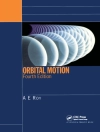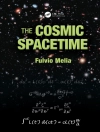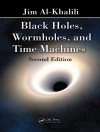This book is one of two volumes meant to capture, to the extent practical, the sci- ti? c legacy of the Cassini–Huygens prime mission, a landmark in the history of pl- etary exploration. As the most ambitious and interdisciplinary planetary exploration mission ? own to date, it has extended our knowledge of the Saturn system to levels of detail at least an order of magnitude beyond that gained from all previous missions to Saturn. Nestled in the brilliant light of the ne w and deep understanding of the Saturn pl- etary system is the shiny nugget that is the spectacularly successful collaboration of individuals, organizations and governments in the achievement of Cassini–Huygens. In some ways the partnerships formed and lessons learned may be the most enduring legacy of Cassini–Huygens. The broad, international coalition that is Cassini– Huygens is now conducting the Cassini Equinox Mission and planning the Cassini Solstice Mission, and in a major expansion of those fruitful efforts, has extended the collaboration to the study of new ? agship missions to both Jupiter and Saturn. Such ventures have and will continue to enrich us all, and evoke a very optimistic vision of the future of international collaboration in planetary exploration.
Tabela de Conteúdo
Overview.- Earth-Based Perspective and Pre-Cassini–Huygens Knowledge of Titan.- The Origin and Evolution of Titan.- Titan’s Interior Structure.- Geology and Surface Processes on Titan.- Composition of Titan’s Surface.- Volatile Origin and Cycles: Nitrogen and Methane.- High-Altitude Production of Titan’s Aerosols.- Titan’s Astrobiology.- Atmospheric Structure and Composition.- Composition and Structure of the Ionosphere and Thermosphere.- Aerosols in Titan’s Atmosphere.- Atmospheric Dynamics and Meteorology.- Seasonal Change on Titan.- Mass Loss Processes in Titan’s Upper Atmosphere.- Energy Deposition Processes in Titan’s Upper Atmosphere and Its Induced Magnetosphere.- Titan in the Cassini—Huygens Extended Mission.- Titan Beyond Cassini—Huygens.- Mapping Products of Titan’s Surface.
Sobre o autor
Robert Brown, of the Lunar and Planetary Laboratory of the University of Arizona, Tucson, USA, is the Team Leader for Cassini’s Visible and Infrared Mapping Spectrometer (VIMS). Dr. Brown is Professor of Planetary Sciences. His research interests center on observational, theoretical, and laboratory studies of planetary surfaces and surface processes. Of particular interest in his research are Titan and the rest of Saturn’s icy moons.
Jean-Pierre Lebreton is the ESA Project Scientist and Mission Manager for the Huygens mission. His particular speciality is planetary science, studying plasma physics.Dr. Lebreton is also in the ESA team working on the Rosetta mission and, in particular, he is involved with the Plasma Consortium Experiment. He led the divisional activities on the Tethered Satellite System.
Jack Hunter Waite is a planetary scientist specializing in the application of mass spectrometry to the study of solar system biogeochemistry and aeronomy. He is involved in research projects in ion/neutral mass spectrometry, gas chromatography, biogeochemistry, thermospheric modeling, and planetary astronomy. Dr. Waite is the Team Leader for the Cassini Ion and Neutral Mass Spectrometer investigation, co-investigator and lead Sw RI hardware manager for the Rosetta/Rosina Reflectron Time-of-Flight, principal investigator for the development of a Jupiter Thermosphere-Ionosphere General Circulation Model, a co-investigator in planetary observing programs with Hubble Space Telescope (HST), Chandra, and the Canada France Hawaii Telescope and leads a major effort for the development of analytical techniques for use in the study of planetary biogeochemistry funded by NASA JPL and the NASA ASTID programs.












